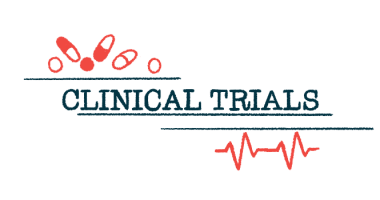Despite Treatment, High Unmet Medical Need in CAD, Study Finds
High rate of anemia, hemolysis events up to 5 years after diagnosis

Even with treatment, many people with cold agglutinin disease (CAD) continue to experience moderate or severe anemia and hemolysis events caused by red blood cell destruction, a new analysis found.
“Despite high proportions of patients receiving CAD-related therapies during the first year following diagnosis, the number of moderate/severe anemia or hemolysis events remained high in patients with CAD at 4 to 5 years after diagnosis, and the need for blood transfusions remained substantial,” the researchers wrote.
“These results provide evidence of the lack of effective CAD-specific treatments available and therefore suggest there is an unmet medical need in CAD,” the team wrote.
The study, “An observational analysis of disease burden in patients with cold agglutinin disease: Results from a large US electronic health record database,” was published in the Journal of Managed Care + Specialty Pharmacy. The work was funded by Sanofi, which developed and markets Enjaymo, a new treatment for CAD now approved in the U.S. and in Europe.
Anemia, hemolysis events common in CAD patients
CAD is caused by an autoimmune attack that destroys red blood cells — a process known as hemolysis — which can lead to anemia.
There is limited published data on the severity of anemia in people with CAD over time. It’s also not known how such anemia affects treatment patterns and the use of other healthcare services.
To learn more, scientists at Sanofi and other institutions analyzed insurance data collected in the U.S. from the late 2000s to the late 2010s.
Using a large healthcare database called US Optum Electronic Health Record, the team gathered and analyzed data on 610 adults with CAD. About two-thirds of these patients were female, and the majority were older than 70.
“This is, to our knowledge, the first study to evaluate trends in treatment and HCRU [healthcare resource utilization] among patients diagnosed with CAD using a large real-world dataset,” the scientists wrote.
At the study’s start or baseline — up to six months before the first mention of CAD in their medical records — just over half of the patients (51%) had laboratory tests indicating moderate or severe anemia. Over a median follow-up time of nearly four years, two-thirds (66.6%) of patients had documented moderate/severe anemia.
The mean number of severe anemia events was 0.72 per patient per year, and the mean number of hemolysis events was 1.44 per patient per year. These events were most common in the first few months of follow-up (i.e., near CAD onset).
“Moderate to severe anemia and hemolysis events were frequently observed during the first 12 months of follow-up and remained high up to 4 to 5 years after diagnosis despite many patients receiving treatment to manage their disease,” the researchers wrote.
During follow-up, about three-quarters of the patients (74.6%) received at least one CAD treatment; most were treated with more than half a dozen medicines over the course of follow-up.
Patients with severe anemia tended to have more lines of treatment, with most receiving at least 10 different therapies during follow-up. Patients with hemolysis also tended to receive more therapies.
The most common type of treatment given was corticosteroids (65.6%). This was followed by therapies that inhibit cell growth, called antineoplastics (24.9%), and rituximab (19.8%), a therapy that lowers the numbers of antibody-producing immune B-cells.
Researchers noted that “the proportion of patients receiving any CAD-related therapy generally increased with anemia severity.”
Over the course of follow-up, individuals in the analysis received a mean of 5.47 blood transfusions — a mean rate of slightly more than one infusion per year. Patients with severe anemia tended to receive more blood transfusions.
Just over half of the participants (52.5%) were hospitalized at least once over the course of follow-up. On average, these patients spent more than 24 days (nearly a month) in the hospital during the follow-up period. Additionally, more than half of participants (53.9%) had at least one documented visit to an emergency department.
“A high proportion of patients with CAD were hospitalized during the first year of disease … and the burden of hospitalization remained high over the study period,” the researchers wrote.
Statistical analyses also showed that CAD patients with more severe anemia or with hemolysis events tended to have more hospitalizations and emergency department visits.
“The burden on health care systems was especially pronounced in patients with moderate or severe anemia or hemolysis events, who required high numbers of blood transfusions and larger numbers of CAD-related therapies, hospitalizations, ED [emergency department] visits, and outpatient services,” the researchers wrote, adding that the high burden on healthcare systems “may be indicative of the lack of effective treatment options available for patients with CAD at the time of the analysis.”







